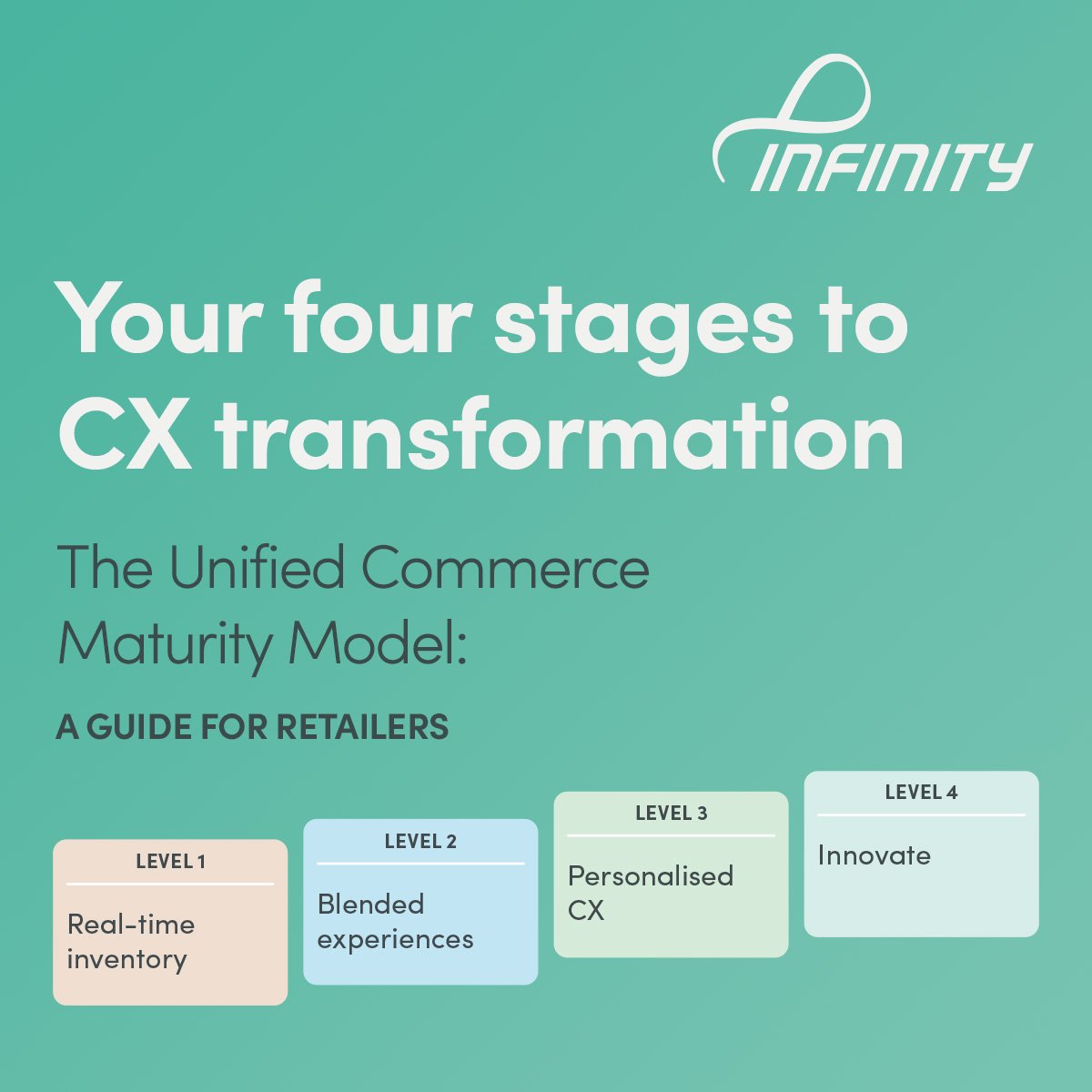As more sales channels and touchpoints emerge, the customer journey from awareness to purchase becomes more complex. Customers want to hop between channels in one seamless interaction. They want more options and less friction.
That means retailers need a strategy that lets customers shop, buy and receive goods how, when and wherever they want.
The only way to meet demands for a truly unified experience is to move to a unified commerce approach that delivers seamless customer journeys across all channels, touchpoints and locations.
Unified commerce is the term used for a retail software platform that provides a central hub for data from every system and channel across your organisation.
It breaks down the walls between channel silos to deliver frictionless customer experiences, while reducing integration and operating costs, and increasing efficiency and accuracy.
At a time when only 25% of retailers are able to connect their online and in-store transaction data it’s gaining momentum, with 20% of retailers heavily investing in it, 32% beginning to invest and 36% considering doing so. Retailers who use unified commerce have seen a solid 7% revenue boost over those who did not. And Australian retailers can tap into a $44 billion opportunity when they connect online and in-store sales channels via unified commerce.
So what exactly is unified commerce?
Unified commerce is a retail management system that unifies all your customer and inventory data on one open, centralised commerce platform that exposes one version of truth to all channels.
That means all your data stays in sync – across point of sale, websites, apps, call centres, field staff, DCs and warehouses, kiosks, pop-up stores, concessions and marketplaces – and transactions can be viewed in near real time.
With all these customer touch points connected, unified commerce lets you deliver a holistic and personalised customer experience more consistently. You can make purchasing online and in-stores more seamless and convenient through endless aisle, digital payments and ‘buy anywhere, fulfil anywhere’ services. And you can treat each customer as the individual they are – one person with one account, interacting with one unified brand.
A unified commerce platform also helps you and your technology partners innovate quickly, maximise margin and deploy new services – efficiently and profitably.
Here’s how unified commerce helps you retail better
Optimise inventory and availability
When you have an accurate, real-time view of your inventory, you can quickly see where inventory is and therefore the fastest place to fulfil from. You can increase sales by using ranging and fulfilment capabilities that enable you to sell products across channels (and even sell products not normally stocked within any channels). You’ll improve inventory accuracy, reduce stock requirements, minimise fulfilment costs and get products to customers faster.
Fulfil orders the way customers want
With a ‘buy anywhere, fulfil anywhere’ strategy and centralised unified commerce platform, you can give customers and staff real-time visibility of inventory, order and customer data across the business. That means you can offer a range of fulfilment options like click-and-collect, ship-from-store and split shipments – whatever suits your customers best.
Attract, scale and retain loyal customers
You can capture customer details for your loyalty program via any channel and then analyse purchase and browsing histories to develop the personalised experiences customers now expect, with rewards and offers that are timely and relevant. Store and call centre employees can also see this information to offer tailored services and encourage conversions at the point of sale.
Localise pricing and promotions
Pricing is shared across channels so customers can trust that they’ll see the same price whether they shop with you in-store or online. You can make better decisions about store product assortments, by matching breadth and depth to demand, trends and local demographics. And by customising products, prices and promotions nationally, regionally and even by individual sites, you’ll increase conversions and maximise profits.
React smarter and faster to demand changes
Using APIs on an open platform, you can expose data in real time, rather than replicate or move it. That lets you add specialised functionality across various systems and provides a fast and easy way to plug in and deploy new services, channels and devices. You’ll innovate quicker, increase speed to market and build your competitive advantage.
This blog was originally published on 13 January 2020 and updated 2 February 2024
If you’re experiencing technology challenges that prevent you from unifying your sales, service and marketing channels, get in touch. We’d love to help you develop the ability to create unified retail experiences for competitive advantage.






























